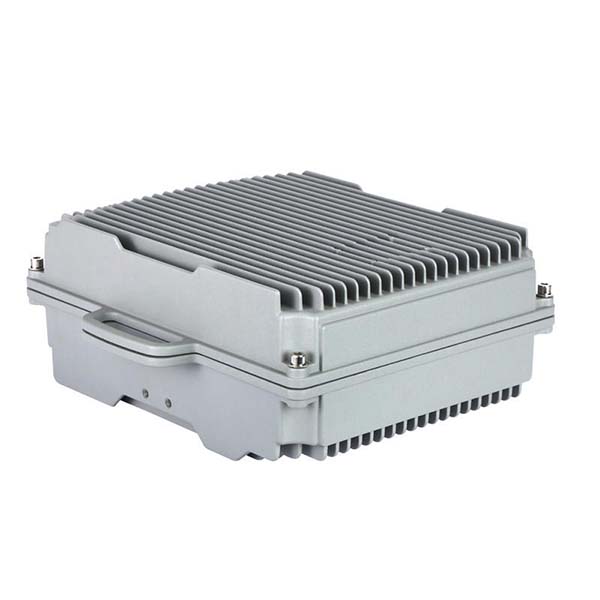Products
Current location: >>Home >> News>> Digital Fiber Optic Repeater: Solving Communication Challenges in the Modern World
Digital Fiber Optic Repeater: Solving Communication Challenges in the Modern World

If you're in the telecommunications or networking industry, you've probably come across the term "Digital Fiber Optic Repeater." But what exactly is it, and why should you care? Well, let me break it down for you.
The Pain Points of Modern Communication
In today's fast-paced digital world, reliable and high-speed communication is crucial. However, there are several challenges that businesses and individuals face when it comes to transmitting data over long distances.
-
Signal Degradation: As signals travel through cables, they tend to weaken, especially over long distances. This can lead to data loss or corruption, affecting the overall communication quality.
-
Limited Bandwidth: Traditional communication systems may struggle to handle the increasing demand for high-bandwidth applications like video streaming, cloud computing, and online gaming.
-
Network Congestion: With more devices connecting to the internet, networks can become congested, resulting in slower speeds and increased latency.
-
Security Concerns: Transmitting sensitive information over public networks can expose it to potential security threats.
Introducing the Digital Fiber Optic Repeater
So, what's the solution to these problems? Enter the Digital Fiber Optic Repeater. This innovative device is designed to enhance signal transmission and coverage in fiber optic communication systems.
How It Works
The Digital Fiber Optic Repeater operates by receiving weak optical signals, converting them into electrical signals, amplifying them, and then converting them back into optical signals for retransmission. This process ensures that the signal remains strong and clear over long distances.
Key Features and Benefits
-
Extended Transmission Distance: Unlike traditional repeaters, digital ones can extend the reach of fiber optic networks significantly, making them ideal for applications like 5G networks and data centers.
-
High Bandwidth Capacity: They support high data rates, allowing for smooth transmission of bandwidth-intensive applications.
-
Improved Signal Quality: By amplifying and regenerating signals, they reduce errors and ensure data integrity.
-
Enhanced Security: Digital Fiber Optic Repeaters can incorporate encryption and other security measures to protect data during transmission.
-
Scalability: They can be easily integrated into existing networks and scaled up as needed.
The Market Landscape
The Fiber Optic Repeater Market is projected to grow from USD 2.24 billion in 2024 to USD 3.5 billion by 2032, at a CAGR of 5.71%. This growth is driven by the increasing demand for high-speed internet connectivity, expansion of fiber optic networks, and the rising adoption of cloud and edge computing.
Key Players
Major companies in this market include Fujitsu, Huawei Technologies, Ciena Corporation, Cisco Systems, Nokia Corporation, and others. These companies are constantly innovating to meet the evolving needs of the market.
Digital Fiber Optic Repeater vs. Traditional Solutions
Let's compare Digital Fiber Optic Repeaters with their traditional counterparts and other solutions.
Digital Fiber Optic Repeater vs. Traditional Repeater
| Feature | Digital Fiber Optic Repeater | Traditional Repeater |
|---|---|---|
| Signal Processing | Digital | Analog |
| Bandwidth Capacity | Higher | Lower |
| Error Correction | Built-in | Limited |
| Security | Enhanced | Basic |
| Scalability | Easily scalable | Limited scalability |
Digital Fiber Optic Repeater vs. Analog Fiber Optic Repeater
| Feature | Digital Fiber Optic Repeater | Analog Fiber Optic Repeater |
|---|---|---|
| Signal Type | Digital | Analog |
| Signal Quality | Superior | Good |
| Latency | Lower | Higher |
| Maintenance | Less frequent | More frequent |
| Compatibility | Broad | Limited |
Real-World Applications
Digital Fiber Optic Repeaters find applications across various sectors:
-
Telecommunications: Extending the reach of 5G networks and ensuring reliable communication.
-
Data Centers: Supporting high-speed data transmission and reducing latency.
-
Industrial Automation: Facilitating efficient communication in manufacturing environments.
-
Healthcare: Enabling telemedicine and remote patient monitoring.
-
Transportation: Supporting intelligent transportation systems.
Future Trends
Looking ahead, the market is expected to witness advancements such as software-defined repeaters, integration of AI and machine learning for network optimization, and the development of more compact and cost-effective solutions.
Conclusion
The Digital Fiber Optic Repeater is a game-changer in the world of telecommunications and networking. It addresses the critical pain points of modern communication systems while offering superior performance and reliability. As technology continues to evolve, these repeaters will play an increasingly vital role in supporting our connected world.
So, if you're looking to enhance your communication infrastructure, consider investing in Digital Fiber Optic Repeaters. They're not just a solution—they're the future of reliable and high-speed data transmission.

 Mobile Signal Booster
Mobile Signal Booster